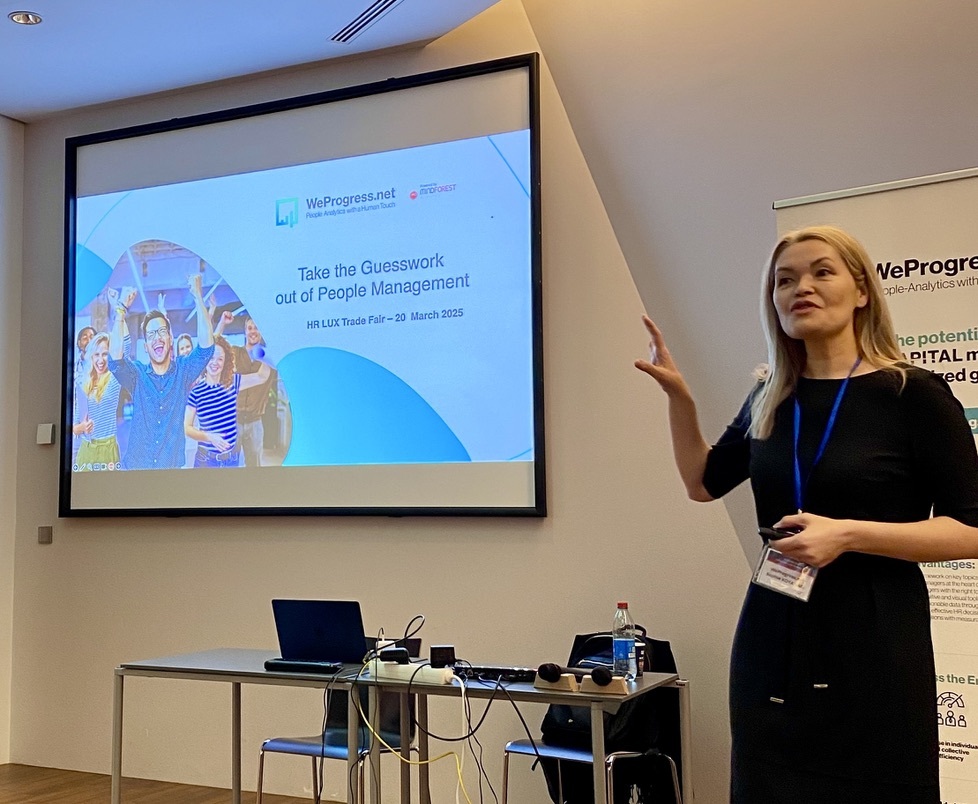Meyer-Briggs Type Indicator (MBTI): a tool to better understand changes!
More than ever, companies are facing profound changes in the way they organise and manage their work. As the health crisis has exacerbated and accelerated this process, roles and responsibilities have had to be rethought, emotions managed and new work practices adopted. And employees are the first to be impacted, many of them forced to leave their comfort zones. It goes without saying that it is not always easy to maintain self-control and a sense of direction in this type of situation.
So how can we help employees cope with the different realities they are facing today?
In teleworking as in the office, knowing oneself well allows for a more objective understanding of external circumstances, and knowing others allows for greater efficiency and helps a team to function better together.
Nathalie Michiels, Occupational psychologist
So how can we achieve this understanding? The Myers-Briggs Type Indicator is a world-renowned tool used to develop an understanding of different personalities. It allows for an in-depth reflection on the behaviours one adopts, based on natural tendencies and/or the demands of the environment.
Application of MBTI at individual level
ISTJ, INTP, INFP what does that mean? You may have seen or heard these abbreviations somewhere.
They represent three of the sixteen potential profiles defined in the MBTI approach. Indeed, during an interview with a certified professional, you will have the possibility to identify and explore the 4 dimensions of your personality, i.e.:
- your energy type,
- the type of information you use,
- your decision-making process
- and the way you approach your environment.
At the end of this exploration, you will discover your profile among the 16 proposed by the model. You will then be able to position yourself and know which four letters best describe you.
So what are the main reasons for undergoing the Myers-Briggs Type Indicator?
Working more effectively with people who may have a very different approach to problems and decision making from you.
Managing your work and personal relationships with greater insight and efficiency.
Understanding your preferences for learning and working environments and identifying the activities and work you enjoy most.
Dealing more calmly with daily conflicts and the stress created by work or life in general.
Applying MBTI in a group context: would you like to find out more about how the group interacts?
A MBTI team building exercise allows us to really become aware of the differences and preferences of each individual in the team.
For example, when it comes to managing deadlines, some people are more comfortable with, or even stimulated by, completing a task at the last minute, while others are not at all at ease with such a situation and may even panic.
Becoming aware of these fundamental differences allows team members to develop working dynamics that take the needs of each person into account and also allows room for compromises.
The MBTI approach can be used from the moment a team is assembled, since in basic terms in order to exist a team must :
- Speak the same language, share information and communicate well;
- Agree on a set of objectives;
- Set operational rules;
- Prevent and manage conflicts;
- Maintain team spirit.
The MBTI approach will enable people who want to create a team to explore the impact of each person’s behaviour on that of the others. The illustration of each person’s preferences will make it possible to generate awareness of the differences and promote a mutual understanding of how each individual functions.
If the team already exists, the deployment of a MBTI team building exercise remains just as relevant. Indeed, in any team the group dynamic is not immune to running out of steam or to experiencing negative changes in the way it functions, which would have direct repercussions on its overall performance. The MBTI approach thus makes it possible to identify the team’s performance “blockers”, to improve communication as well as interpersonal relations within the team.
Exploit your team's potential with MBTI
WANT TO RECEIVE OUR LATEST THOUGHT LEADERSHIP CONTENT?
Related posts
 Take the Guesswork out of People Management
Take the Guesswork out of People Management
 From processes to people: achieving quality
From processes to people: achieving quality
 Daring to lead Positive Transformation: What if Positive Emotional Capital was your key to sustainable change?
Daring to lead Positive Transformation: What if Positive Emotional Capital was your key to sustainable change?
 Why hire Change management professionals? We can do it alone!
Why hire Change management professionals? We can do it alone!
 Digital Transformation and Change Management: Lessons shared in an event hosted by Cebi and MindForest
Digital Transformation and Change Management: Lessons shared in an event hosted by Cebi and MindForest




